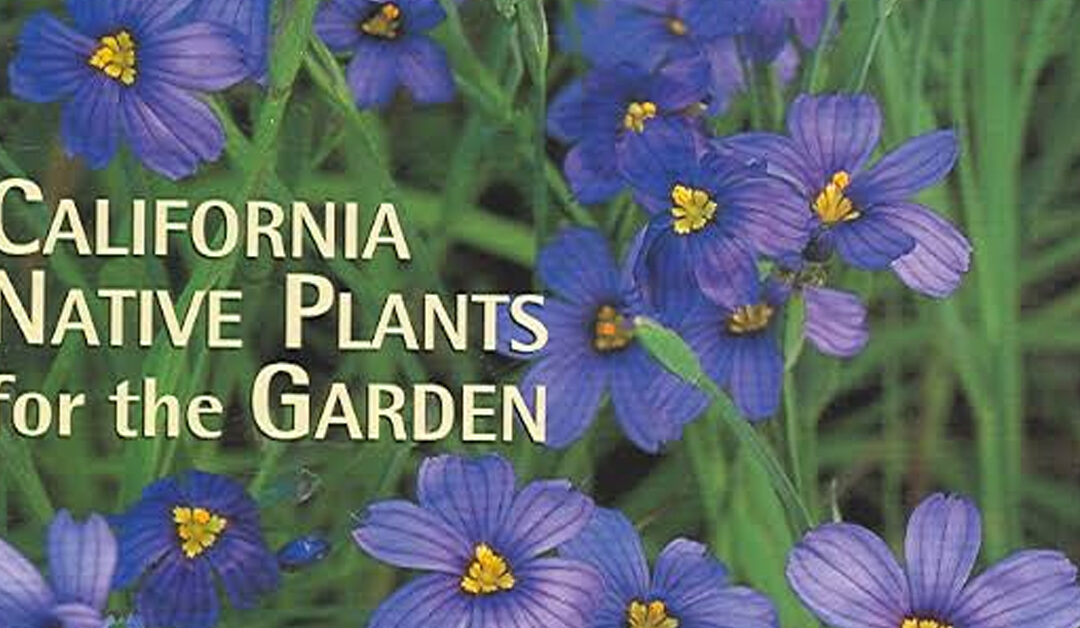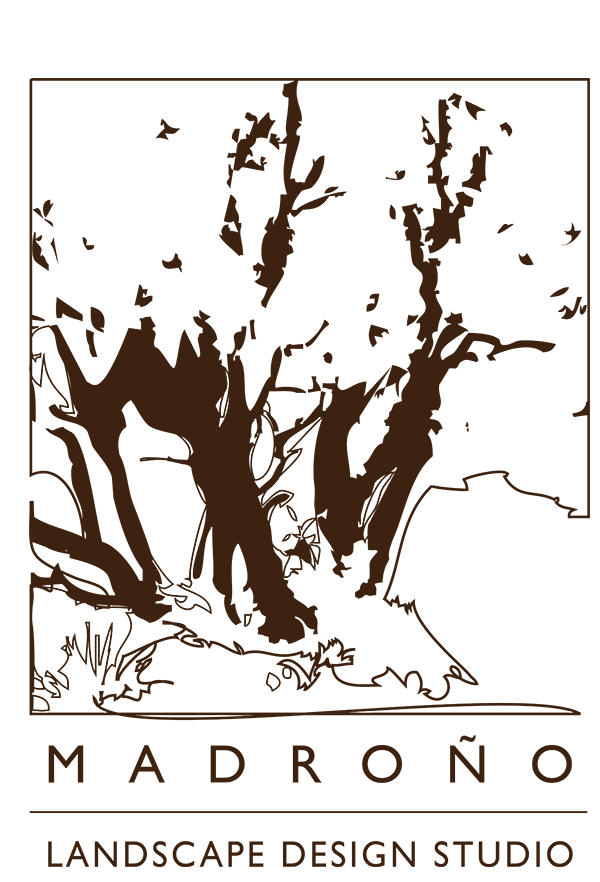A new book on California native plants has hit the shelves, opening the door for interested gardeners wishing to learn more about our local flora. Trend- spotters agree that interest in native plants is growing.
Classes in native plant horticulture are drawing students to colleges, arboretums, nonprofit groups and private studios, but the best way to learn about plants has always been to get your hands dirty; fortunately, the Bay Area abounds with opportunities to see native plants in the wild and to work with them in the urban landscape.
“Many California native plants were featured in the botanical gardens of Europe long before there was much interest in them here,” says Judy Thomas, professor of landscape horticulture at Merritt College whose class on native plants was registered over-limit this semester by students begging for admittance. “With increasing ecological awareness, we are learning to grow the plants which co-evolved here with local fauna for thousands of years.”
Unmatched biodiversity
“The Jepson Manual: Higher Plants of California” pegs our flora at close to 6,000 species, of which a quarter are endemic. Such biodiversity is unmatched in all of North America and most of continental Europe and Asia, deriving largely from California’s vast diversity of climate. Where else in the world can you snowboard in the morning and surf in the afternoon? Here we find every climate known on earth (except for the tropics, but that type has been replicated with a huge amount of irrigation in Los Angeles), and thus a wealth of plant life that has adapted to each of these manifold conditions. In the Bay Area, we enjoy a further multiplicity of microclimates, whose small fluctuations of rainfall and temperature produce our rich local flora, a tapestry of many threads.
Where to begin
With so many species to learn, complicated by the linguistic ha-ha of botanical Latin, the field of native plants can feel intimidating at first. Where is the poor newcomer to begin?
First, go out and buy “California Native Plants for the Garden,” the new book by Carol Bornstein, David Fross and Bart O’Brien. This volume is the first true watershed in the canon since Marjorie D. Schmidt published “Growing California Native Plants” in 1980. It includes 450 color photos of 500 species with generous descriptions of both natural habitat and requirements in cultivation, a manifesto written by three of California’s most distinguished experts: O’Brien, director of horticulture and curator of the living collection at Rancho Santa Ana Botanic Garden; Fross, founder and president of Native Sons wholesale nursery in San Luis Obispo; and Bornstein, director of living collections and nursery at the Santa Barbara Botanic Garden. These horticultural heavyweights bring more than a century of collected experience to the table, and their new book is a must-have (even if you only look at the pictures). The authors will speak at the California Horticulture Society’s meeting on Monday at the San Francisco Botanical Garden at Strybing Arboretum.
“There is no doubt that the trend toward using natives has taken off in the last few years,” says Glenn Keator, the Berkeley botanist and author who ranks among the Bay Area’s most beloved native plant educators. Keator wrote the chapter on Brodiaea for the Jepson Manual and has published more than 10 books on California native plants, including “The Life of an Oak,” “Plants of the East Bay Parks,” and the much-revered (though sadly out-of-print) two-part compendium “Complete Garden Guide to the Native Perennials of California” and “Complete Garden Guide to the Native Shrubs of California.” With affable style and wit, he can render even dreary subjects like taxonomy both entertaining and absorbing. Catch him when he teams up with landscape designer Arlie Middlebrook for a six-session class, “California Natives in Style,” beginning Wednesday at the San Francisco Botanical Garden (www.sfbotanicalgarden.org) or at one of many other native plant classes he gives at local institutions including Merritt College, Tilden Park and the Madroño landscape design studio.
For a sense of the widening community of California native plant aficionados, dip an electronic toe into the cyber pool by joining the CA-Natives e-mail listserv (see “Resources” for instructions). This ongoing forum of inquiry and enlightenment is conducted entirely by e-mail, a wonderful source of knowledge, experience, and insights into our local flora. Here you will meet a wide cast of characters from novice to expert and can join them as they banter about their favorite species, ask questions about specific plants or site conditions, and (occasionally) quarrel like soap opera lovers.
Volunteer to learn
Perhaps the best way to learn about the cultivation and care of native plants is to volunteer your time at a nursery. The Regional Parks Botanic Garden at Tilden contains the world’s most complete selection of California native plants, including many rare and endangered species, and it provides the volunteer crew at Native Here Nursery with ample material for propagation, which in turn supplies Tilden’s annual sale (third Saturday in April), an open-market bazaar of horticultural treasures that draws native-plant fanciers from across the state.
In San Francisco, the Presidio nursery depends on volunteers to propagate the 40,000-plus indigenous plants it grows every year for restoration sites including Baker Beach and Crissy Field. Interested volunteers should also consider the native plant department of the nursery at the San Francisco Botanical Garden at Strybing Arboretum. Internship opportunities are springing up at private nurseries throughout the Bay Area.
See what the fuss is all about, and learn how native plants define your unique part of the world.
Resources
The California Native Plant Society publishes the Fremontia, an excellent quarterly journal, and the society’s local chapters lead hikes, hold plant sales, and give numerous talks and classes. It’s a group worth joining. Find more online at www.cnps.org.
Glenn Keator mails out a seasonal flyer detailing his classes on California native plants. Get on his list by sending contact information by e-mail to GKeator@aol.com or look for him at:
Merritt College
- Landscape Horticulture Dept.
- (510) 436-2418
- www.merrittlandhort.com
Volunteer Opportunities:
Native Here Nursery (with Tilden Park, Berkeley)
- (510) 549-0211
- www.ebcnps.org/NativeHereHome.htm
Presidio Nursery
- 1244 Appleton St., San Francisco
- (415) 561-4826
- www.parksconservancy.org/support/volunteer/presidionpn.php
San Francisco Botanical
- Garden at Strybing Arboretum
- Volunteer Services: (415) 661-1316 ext. 312
- www.sfbotanicalgarden.org/Volunteering
CA-Natives e-mail listserv
Send e-mail to listserv@calypteanna.com with the line “subscribe ca-natives” (omit the quotes) in the body of your message. You will begin to receive e-mail from the server. You can unsubscribe at any time.
Originally published at https://www.sfgate.com/homeandgarden/article/To-learn-about-native-plants-just-dig-right-in-2522469.php

Madroño president Geoffrey Coffey started the company in 2005 out of the back of a pickup truck. His garden column, “Locals Only”, first appeared in the San Francisco Chronicle in 2002. He lives in San Francisco with his wife and two children, where he also sings and thumps the bass for Rare Device.


